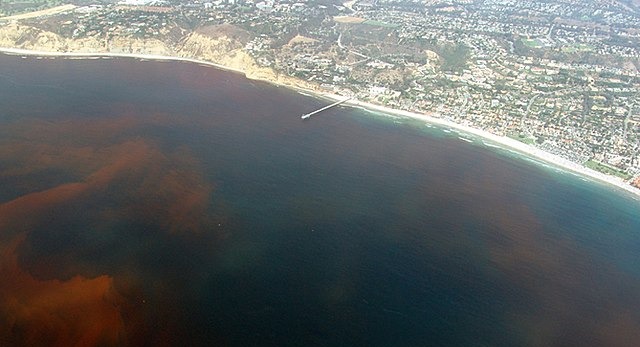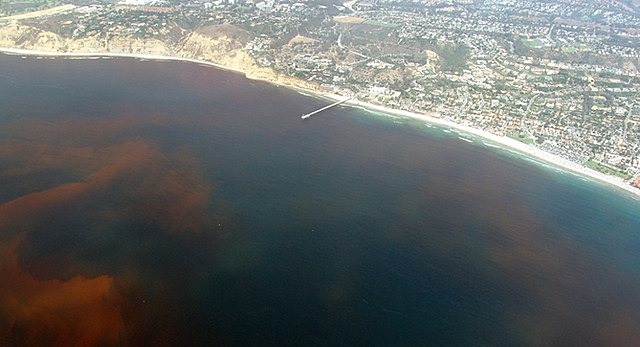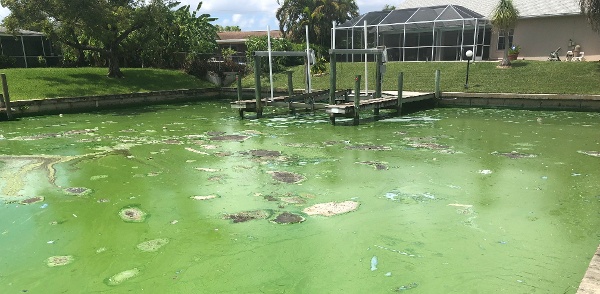
The red tide has returned to Florida. Year over year, Harmful Algal Blooms (HABs) threaten the health of humans, kill marine life and cause economic damage to local businesses. Though red tide, caused by the organism Karenia brevis, can occur naturally, scientists believe the bloom is being fueled by excess nutrients and pollution caused by farming, tourism and urban development near the Everglades. Even more alarming is the suspected link between exposure to HABs and the development of neurological disease like ALS, Alzheimer’s and Parkinson’s, an issue explored in a recent documentary called Toxic Puzzle.
It’s vital that we spread awareness of this threat and do our part to reduce our impact on sensitive aquatic environments and our families.To help limit the growth of HABs in your community waterbodies it’s important to understand how we are contributing to the issue and implement the following proactive and sustainable measures:

Properly identify HABs
Accurate identification of harmful algal blooms is the first step to protect your family and pets from the negative effects of algal toxin exposure. HABs can manifest in parallel streaks or clumped dots. Other blooms may look like spilled blue, red-brown, or white paint or turn the water a bright “pea soup” green. Keep an eye out for soupy or oily scum on the surface of the water. In some instances, you may notice an ammonia-like smell or experience nose and throat irritation. Proactive water quality testing and management strategies are always recommended, but if you suspect a toxic bloom is present in your waterbody, an algae assessment by a professional laboratory is recommended to confirm the species and set the framework for an effective management plan moving forward.
Dispose of organic materials
Following yard work, leaves, grass and other debris should be bagged and removed from the property to prevent them from accumulating and decaying in nearby waterbodies. When organic materials are allowed to decompose in water resources, they result in nutrient pollution, which can lead to nuisance algae.
Establish a beneficial buffer
Steps should be taken to intercept runoff containing sediment, trash, pet waste and other organic materials from entering lakes and ponds during rainstorms. Allow vegetation to grow up to 18 inches tall and three to five feet from the edge of the lake or pond shoreline, and also consider the addition of beneficial wetland plants in the littoral areas around the perimeter of the lake or pond.

Reduce excess nutrients
For lakes and ponds with chronic nutrient problems, the application of phosphorus-locking technologies can make a noticeable impact. When applied by a licensed professional, these products work to rapidly remove excess nutrients from the water column, improving water clarity and reducing the food source of algae. Go the extra step by properly disposing of trash and pet waste.
Apply beneficial bacteria
beneficial bacteria can help consume additional pond nutrients that fuel nuisance algae blooms and help facilitate the degradation of the organic nutrient sources.
Introduce aeration
When paired with other nutrient-limiting strategies, floating fountains and submersed diffused aerators can help consistently circulate warm, stagnant water and facilitate the conversion of excess nutrients to forms that do not sustain algae. Likewise, new premium aeration options like nanobubble aeration can be used to directly eliminate algae and dangerous cyanotoxins while balancing water quality.
Regularly test water quality
Lake managers, pond owners and municipality leaders often wait until after a harmful algal bloom appears to conduct water quality tests, but a proactive testing program can help identify water quality impairments related to dissolved oxygen, pH or nutrient levels before they get out of hand. Over time, water quality data can be used to predict the onset of a bloom and prevent its impact without closing the waterbody or interfering with recreation, irrigation or drinking water services.
SOLitude Lake Management is a nationwide environmental firm committed to providing sustainable solutions that improve water quality, enhance beauty and preserve natural resources.
SOLitude’s team of aquatic scientists specializes in the development and execution of customized lake, stormwater pond, wetland and fisheries management programs. Services include water quality testing and restoration, algae and aquatic weed control, installation and maintenance of fountains and aeration systems, shoreline erosion control, muck and sediment removal and invasive species management. SOLitude partners with homeowners associations, golf courses, private landowners, businesses and municipalities. SOLitude Lake Management is part of Rentokil, a leading business services company, operating across the United States, Canada and Puerto Rico.
For more information, visit SOLitude Lake Management at solitudelakemanagement.com, and connect on Facebook, LinkedIn and Twitter.









